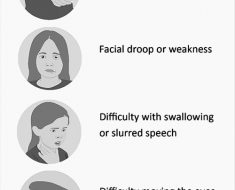Verrucas (verrucae) or plantar warts affect the pressure areas of the feet. These affect most individuals at some points in their lifetime. Most commonly affected are those between ages 12 and 16.
In most individuals the warts go away without therapy within 2 years. One thirds of cases are more resistant to therapy and may have persistent lesions beyond two years. 1-5
Verruca symptoms
Symptoms of plantar warts or verrucae include:
-
Warts may appear in various shapes and sizes. For example, the size of a wart can range from 1mm to over 1cm in diameter.
-
Verrucas are often painful due to their location. As they commonly occur on pressure areas of the feet like the heels or the balls of the feet, they may hurt. Most patients tend to avoid putting weight over the warts and end up with an altered posture and gait. This leads to pain in the legs and the back as well.
-
Sometimes these are itchy.
-
On scratching the warts may bleed as well.
-
Verrucae may be single or more than one clustered together. These are called mosaic warts.
-
The verrucae are round or oval in shape and are firm and raised or flattened. Their surface is irregular and typically like a cauliflower.
-
The skin around the verrucae is white in color. There is often a black dot in the centre that is actually the blood vessel lying underneath.
-
Verrucae may not be typically raised but may be flattened due to their occurrence over the pressure areas of the feet and constant pressure over them. The weight of the body may force the warts to grow back into the skin. This leads to pain as well.
-
Verrucae may spread due to scratching, biting, finger sucking or shaving to other parts of the body like fingers, nails, mouth, face etc. This occurs due to breakage of the warts and release and spread of the virus to other areas.
Diagnosis of verrucas
Diagnosis of plantar warts or verrucae is commonly made by clinically examining them.
The physician takes into account several factors like history of sharing community showers etc., familial or partner history of such warts as these are contagious and history of eczema and conditions where there is a risk of reduce immunity like AIDS, transplant, leukemias or lymphomas.
The wart is examined for number, location, size, shape, colour and texture of the wart’s surface
Following examination the physician or podiatrist treating the wart may gently cut away the surface of the wart to reveal a small black dot in the centre. This confirms a verrucae.
Blood tests may be advised to check for causes of low immunity and diabetes that result in resistant cases.
Ruling out other conditions
Other conditions that need to be ruled out before diagnosis of verrucae are confirmed include:
-
corns and calluses that are areas of thick dry skin which are caused by excessive pressure or friction
-
black heel
-
verrucous squamous cell carcinoma (skin cancer of the feet)
-
arsenic induced keratosis
-
actinic keratosis
-
cutaneous horn
-
lichen planus
-
lichen nitidus
-
molluscus contagiosum
-
seborrhoeic keratosis etc.
A Molluscum contagiosum (MC) for example is a contagious skin infection that is caused by the Molluscum contagiosum virus. There are small, firm, raised spots on the skin in this condition.
Squamous cell carcinoma is skin cancer that appears as crusted lumps that are slow growing and often painful. Rarely existing warts may grow into cancer.
Sources
- http://www.nhs.uk/Conditions/Warts/Pages/Symptoms.aspx
- http://www.patient.co.uk/doctor/Verruca.htm
- http://www.usi.edu/studenthealth/forms/WARTS.PDF
- http://www.sheffield.nhs.uk/podiatry/resources/pilverucas.pdf
- http://sussexcds.co.uk/docs/bad_patient_info/BAD_Verruca.pdf
Further Reading
- All Verrucas Content
- Verrucas – What are verrucas?
- Causes of verrucas
- Treatment of verrucas
- Prevention of verrucas
Last Updated: Apr 22, 2019

Written by
Dr. Ananya Mandal
Dr. Ananya Mandal is a doctor by profession, lecturer by vocation and a medical writer by passion. She specialized in Clinical Pharmacology after her bachelor's (MBBS). For her, health communication is not just writing complicated reviews for professionals but making medical knowledge understandable and available to the general public as well.
Source: Read Full Article





